Lao Cai is a province in Northern Vietnam, home to the famous ancient Sapa Town. In the following article, let’s explore what makes Lao Cai special as a must-visit destination for visitors to Vietnam.
General Information
Covering an area of 6383 square kilometers, Lao Cai is a mountainous region near the Vietnam-China border. Lao Cai borders Ha Giang Province to the east, Son La and Lai Chau Provinces to the west, Yen Bai Province to the south, and Yunnan Province (China) to the north. Lao Cai was the residence of major ethnic groups in Vietnam such as Viet (Kinh), H’Mong, Tay, Thai, Dao, etc. This makes Lao Cai a region rich in cultural identity, traditions, and customs.
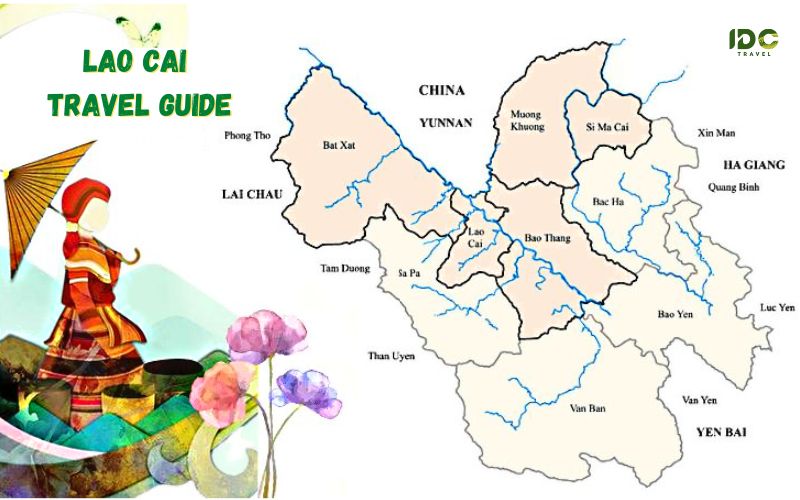
Lao Cai map
Furthermore, the topography is complex with a large number of valleys, hills, and mountains. Here you will find Mount Fansipan, the roof of Indochina with a height of 3143km which attracts many visitors every year. There are around 107 rivers in this region of which the 3 largest rivers are the Red River, Chay, and Nam Mu. Furthermore, the province possesses a biological treasure with 2000 species of flowers and 442 species of birds and animals. Most of them can only be found in Lao Cai and nowhere else in Vietnam or the world.
When talking about Lao Cai, especially Sapa, Bac Ha, Bat Xat, Muong Khuong with rice terraces and peach blossoms, etc. All this makes this region a must for national and international tourists on a tour of Vietnam and especially a trip to the north of Vietnam.
Lao Cai Weather
Lao Cai enjoys a tropical climate and is also influenced by the monsoon. However, due to the complex topography, the climatic characteristics vary with altitude and season.
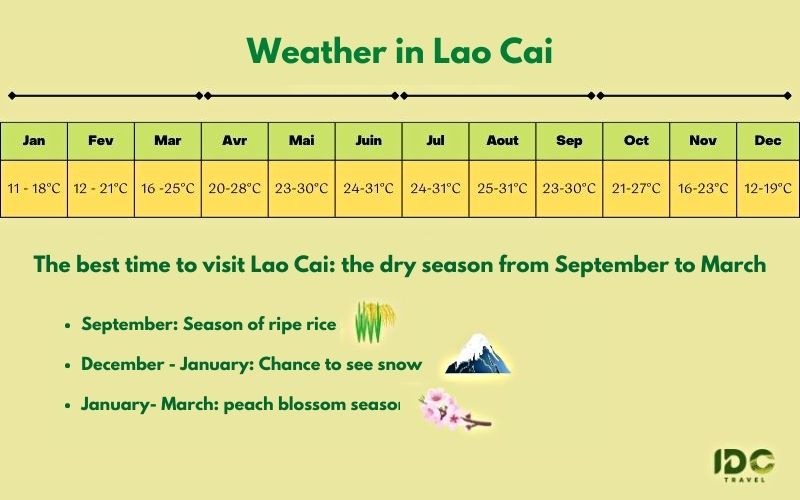
Weather in Lao Cai
Lao Cai has two main seasons. The rainy season lasts from April to October and the dry season from October to March. The average temperature is around 23°C. Lao Cai receives a lot of rain in the summer, which discourages visits. It is more dangerous because the road becomes slippery.
The best time to visit Lao Cai is during the dry season from September to March. If you want to see snow in Sapa, travel there from December to January. The peach blossoms are in full bloom when you arrive in Lao Cai from January to March. September is harvest time here and the flowers are yellow as far as the eye can see.
Getting to Lao Cai
To get to Lao Cai, starting from Hanoi is the simplest and easiest route. There are many ways to get to Lao Cai from Hanoi: train, bus or private car. The distance between Hanoi and Lao Cai is approximately 320 km, which requires at least 4 hours of travel. If you want to visit Sapa, you need to drive more than 40km from Lao Cai City.
Train
The train is the most authentic way to get to Lao Cai and is cheaper than others like bus or private car. Travel time from Hanoi – Lao Cai is about 8 hours. You can buy tickets at the Hanoi train station or from one of the private vendors. Prices for a one-way ticket for a berth in a shared cabin range from 600,000 VND to 1,100,000 VND (depending on the quality of the cabin). To take a train from Hanoi to Lao Cai, you need to go to Tran Quy Cap station at 120 Le Duan Street, Hoan Kiem. The departure times are different but between 9:00 p.m. and 9:00 p.m. and 10 p.m.
Bus/sleeper bus
The bus is the fastest way to travel to Lao Cai from Hanoi. Thanks to the new Hanoi – Lao Cai highway, the journey takes only 4 to 5 hours. Hanoi – Lao Cai buses are available all day, you can choose to take the day or night bus. But we recommend the night bus and especially the night bus. Since you will have time to rest and arrive in Lao Cai at sunrise and that’s it, you can start your journey right away. The price varies between 250,000 and 400,000 per person per trip.
Private car
Owning a car is the most popular choice for foreigners. You will make the most of your trip to North Vietnam by using our car rental service with a driver. Our driver will pick you up from your hotel in downtown Hanoi and then drive you safely directly to Lao Cai. Moreover, upon your arrival, our driver is always ready to take you to any tourist destination in Lao Cai that you wish to visit.
Downtown
To discover the city of Lao Cai in detail, you have the choice between many different means of transport such as scooters, taxis, or private cars. Famous taxi agencies in Lao Cai for your reference are Taxi Mai Linh, Taxi Huu Nghi, and Taxi Lao Cai.
Accommodation in Lao Cai
As Lao Cai is an increasingly popular destination, you have many accommodation options of all categories: hotel, family… at an affordable price. The rooms are well-equipped and meet the needs of tourists. Also, in mountain towns like Lao Cai, it is recommended that you stay with the locals to get to know the life of the locals well. It’s a new type of accommodation that allows you to spend at least one night with the locals and have the most authentic experiences.
Places to Visit in Lao Cai
Spending time in Lao Cai on a trip to North Vietnam can bring you more than excitement. With a myriad of great destinations from nature outings and shopping, travelers have a golden opportunity to let off steam and enjoy their fantastic and meaningful journey.
Sapa Town
Sapa, a famous tourist spot that attracts many visitors, is located at an altitude of 1650 m and 37 km from Lao Cai town. The climate is mild in summer and it sometimes snows in winter. Sapa has both wild virgin forests and modern and poetic tourist projects, seaside resorts, high-end hotels, and ancient ethnic villages. Here are the attractive tourist attractions in Sapa:
Sapa Stone Church: The church in the heart of the city, one of the busiest places in Sapa, is known for its architecture rich in history, and the best-preserved works of the time. It stands out as a meeting place for both locals and visitors, where lively festive events take place on weekends.

Sapa church
Cat Cat Village: Cat Cat Village is located 2 km from Sapa. You can walk there and enjoy the beautiful view of the Muong Hoa Valley. It is a Hmong village, you will be able to meet its very warm inhabitants, you will be able to take part in a weaving workshop and listen to the anecdotes of the villagers on their method of the marriage proposal, almost a matter of “goujaterie”. : The man can kidnap and confiscate the woman he wants for 3 days. After this very short period, the woman decides whether she wants to marry him or not.
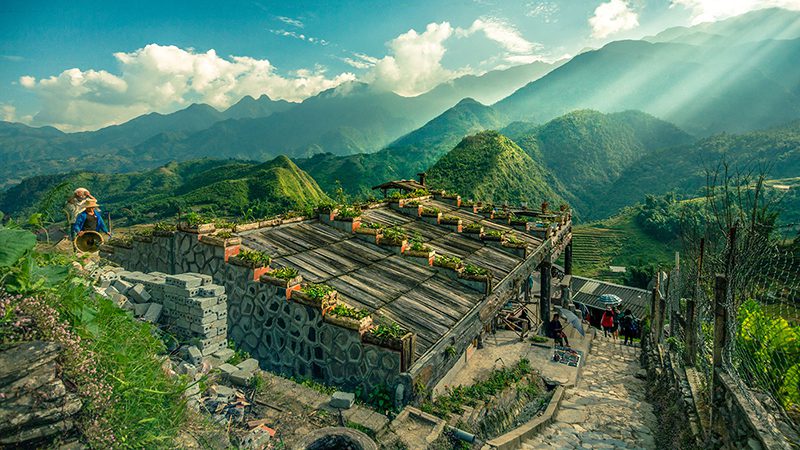
Cat Cat Village – Sapa
Ta Phin Village: It is a village of Red Dao and Hmong which is 10km away from Sapa. During a walk through the village, you will have the opportunity to share the daily life of the inhabitants, visit the market and discover the embroideries.
Lao Chai Village: Lao Chai is a black Hmong village 7 km from Sapa, in the valley. From the village, you can see the entire valley up to Sapa and admire the hundreds of rice terraces: from the river to the top, the mountain is completely covered with terraces. Twilight, when the light is at its most vibrant, gives the valley a unique color, giving the feeling that the valley was painted by an 18th-century artist.
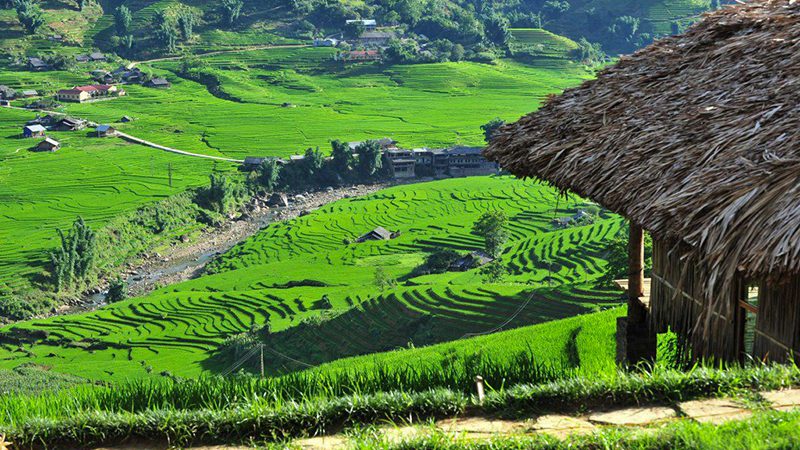
Lao Chai Village
Ta Van Village: Ta Van is located about 10 km from Sapa, in the Muong Hoa Valley. Surrounded by rice terraces, the village belongs to the Giay ethnic minority. Walking through the village, one discovers peasant life: rice threshing, weaving, etc.
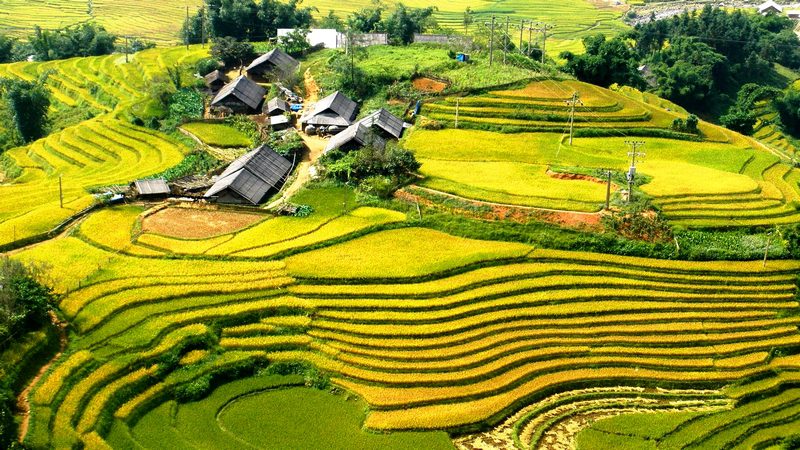
Ta Van Village
O Quy Ho Pass: The most spectacular pass connecting 2 provinces of Lao Cai and Lai Chau offers you breathtaking scenery.
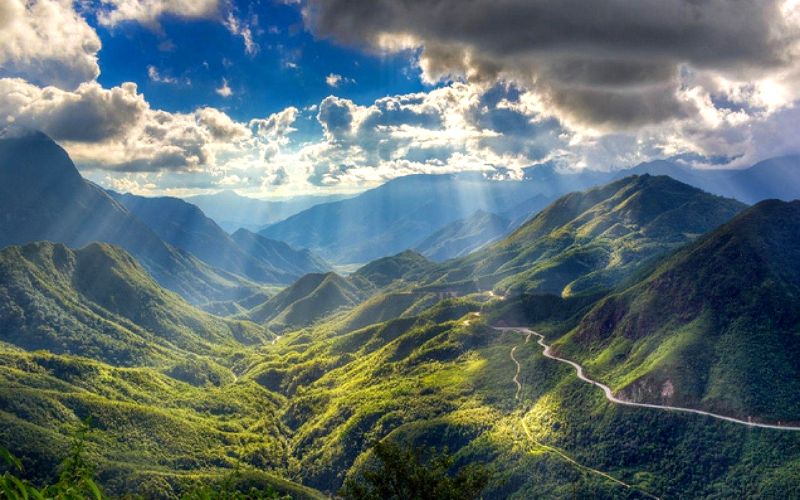
O Quy Ho Pass
Hoang A Tuong Palace: Also called the “Palace of the H’Mong Kings”, this palace has a unique architecture of Euro-Asian inspiration. The balconies, the long corridors, the interior decorations… all of this is reminiscent of the works of the 17th and 18th centuries in France.
Mount Fansipan: The roof of Indochina is an ideal place for a sporty hike in the heart of nature. It is undoubtedly one of the most memorable trekking routes in Vietnam.
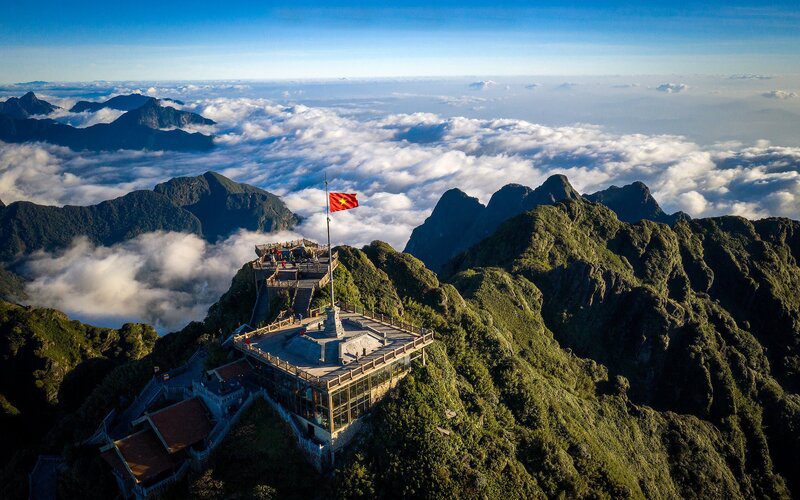
Mount Fansipan
Silver Waterfall: One of Sapa’s most popular attractions, water falling from a height of over 200m creates white caps that look like seas of floating clouds.
Ethnic markets
Lao Cai has many local markets and is a great way to experience the ethnic diversity of minorities and strong cultural personalities.
- Bac Ha: It is the largest and most famous market because it has well preserved its original side. It is a place of exchange of goods, cultural exchanges, and encounters. The market is particularly famous thanks to the Hmong people who come here to trade. Their brightly colored dresses light up the market streets, giving them that charming name. Open only on Sunday.
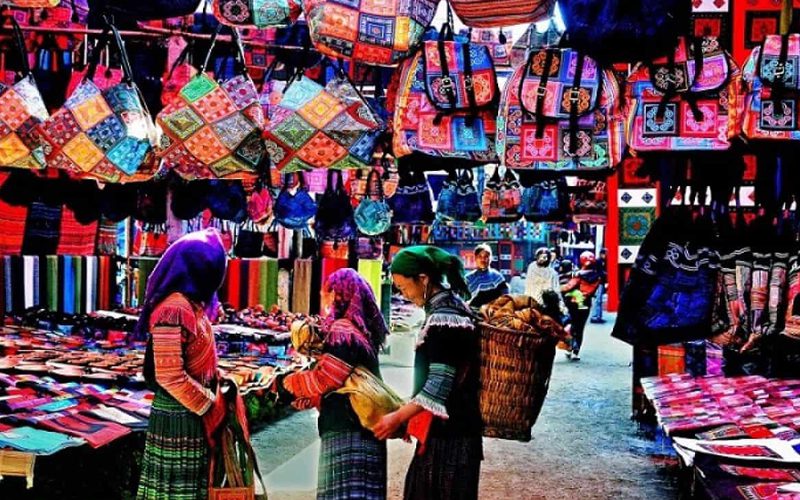
Bac Ha Market
At 700 meters above sea level, Bac Ha is an ideal off-the-beaten-path place to visit the colorful Sunday markets, which are also the highlight of this neighborhood. You can reach Bac Ha by booking a van or tour from Sapa, which will take 3 hours to get there.
People of different ethnicities consider this market as an opportunity to meet their family, and friends after a long absence. For young singles, this is a good chance to put on their best handmade traditional costumes and look for their dates. Tourists can come here to buy distinct special clothes, try traditional food, learn about the life of ethnic groups, and talk to them through guide interpretation.
- Coc Ly: Coc Ly market is 35 km from Bac Ha, on the banks of the Chay River. You will find groceries, traditional clothing, etc. Open Tuesday only.
- Can Cau: Located 20 km from Bac ha and only 9 km from the Chinese border, the Can Cau market is small but very crowded with as many as 8 different minorities, as well as Chinese traders, who cross the border to exchange goods.
In addition to the markets listed below, you will find many other ethnic markets open all weekend: Lung Khau Nhin (every Thursday), Binh Lu (Sunday), and so on.
Bac Ha Valley of Flowers
Located in the commune of Thai Giang Pho, less than 2 kilometers from the town of Bac Ha, the aptly named “Valley of Flowers” is a paradise for lovers of botany and photography. Hundreds of varieties of rare flowers, each more colorful than the next, including many species of orchids, bloom year-round among the cornfields and plum trees, tended by the skilled hands of Bac Ha’s ethnic minorities. These colorful flower carpets are a real treat for all the senses!
Hoang Lien National Park
Home to the highest mountains in the country, Hoàng Liên National Park is one of the most desirable areas in Vietnam. Known for its dense vegetation, this park has preserved some of the country’s most pristine beauty. This destination is ideal for adventure lovers.
Food to Eat in Lao Cai
Thang Co
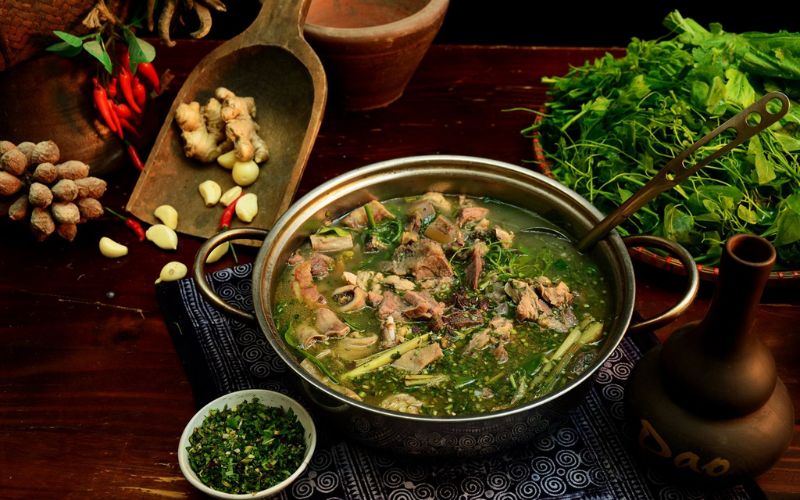
Thang Co
Thang Co is widely known as the most traditional dish of the H’mong ethnic group. Thang Co is a dish made from beef, buffalo, pork and horse meat. However, locals often use horse organs such as heart, liver, bones, and meat to prepare this dish. All these organs are placed in a large pot of water and boiled for a long time.
‘Carried-under-arm’ pork (lợn cắp nách)
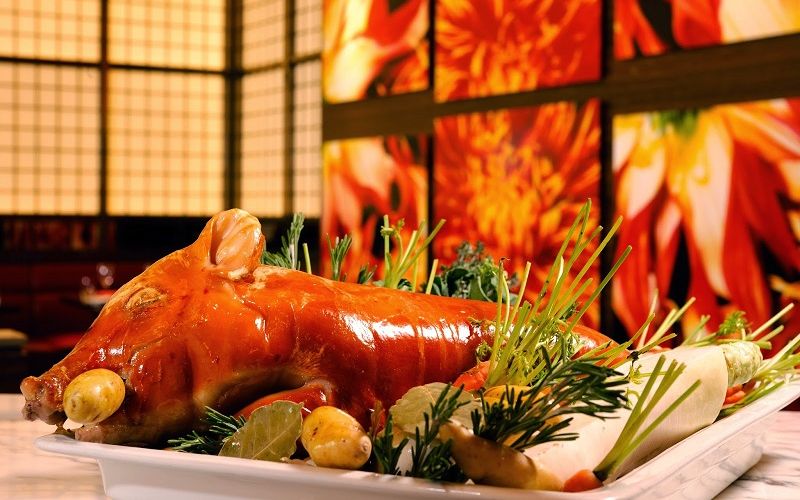
Lon cap nach quay -Grilled pork
This dish is called “pig carried under the arm” in Vietnamese because the pigs are very small, around 10 kg, so they can easily be carried under the arm. They are not boars, but they are bred in the forest to increase their strength. Pigs are broiled or broiled until the skin is crisp but not tough.
Bac Ha sour noodles (Pho chua Bac Ha)
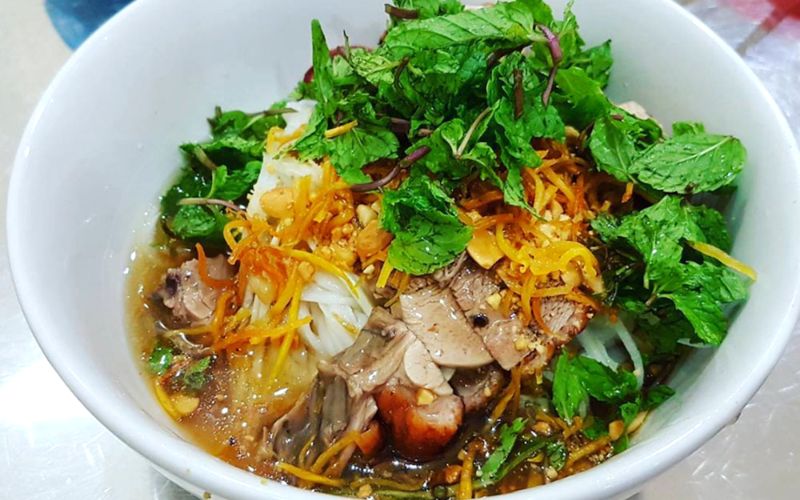
Bac Ha sour noodles
Although they are made with the same ingredients as Hanoi noodles, the taste of Bac Ha noodles is special and special.
To prepare the sweet and sour noodles, the chef uses essential raw materials: gherkins, finely chopped vegetables (lettuce, basil), sesame, peanuts, and of course tagliatelle and broth. Before tasting this dish, you should add some salt as this pasta will be a bit bland for people from elsewhere. Sour noodles are served cold, so it’s the right choice for summer.
Five-color sticky rice (xôi ngũ sắc)
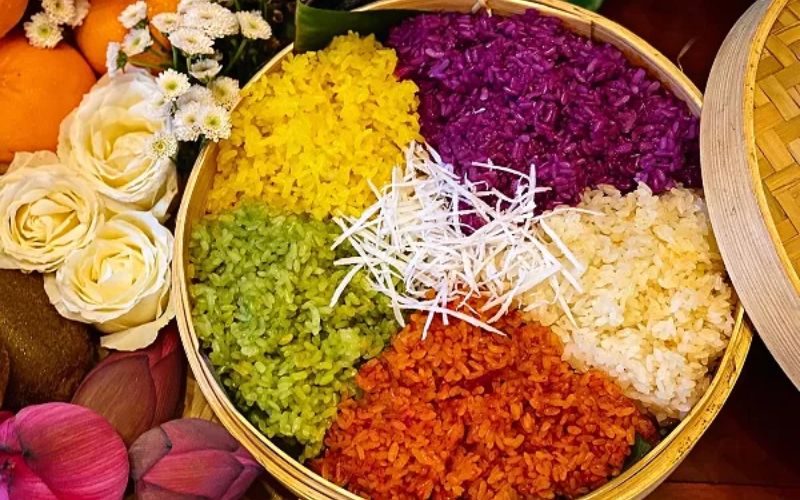
Xoi ngu sac – Five-color sticky rice
It is the traditional dish of the Tay people. It gets its name from the fact that it has five colors. According to their belief, these five colors represent the five elements of life: yellow is earth, green is plant, red is fire, white is metal, and purple is water. This colorful sticky rice is made without the use of chemicals; Only natural leaves and flowers are used.
We hope that the information in the Lao Cai travel guide will be useful to you. If you would like more information and ideas to create an unforgettable itinerary in Lao Cai or in Vietnam in general, do not hesitate to contact us!